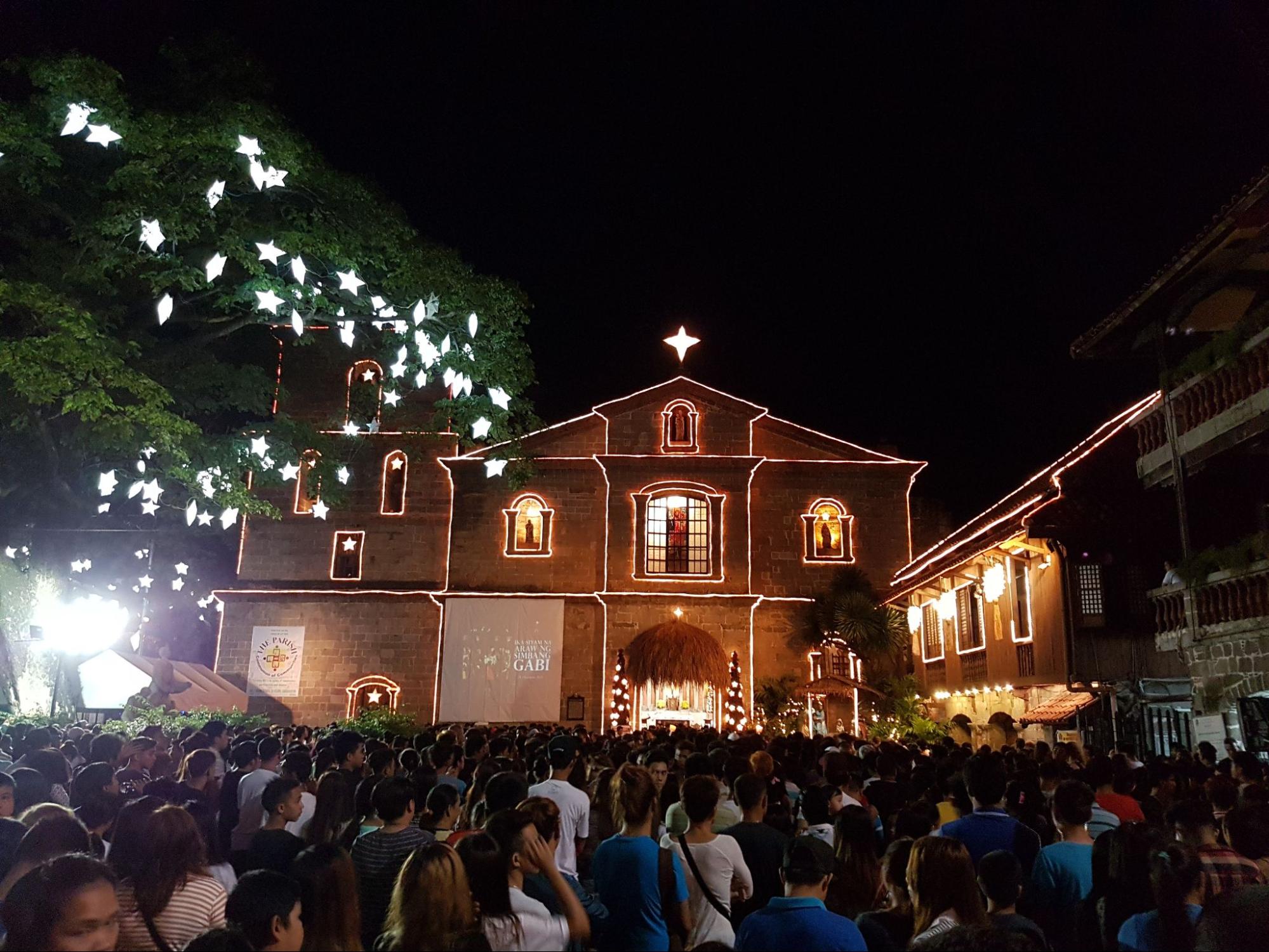
10 Unique Filipino Christmas Traditions
November 29, 2024

Christmas in the Philippines is a vibrant and joyous occasion that reflects the country's rich cultural heritage and strong Christian faith. Unlike many other nations, the Filipino Christmas season begins as early as September, marking the start of the "Ber months." Unique traditions, delicious food, and a strong sense of community characterize this extended celebration.
Here are 10 notable Filipino Christmas traditions that embody this festive season's spirit.
Celebrating Jesus' Birth
At the heart of Filipino Christmas celebrations is the profound religious significance of Jesus Christ's birth. For many Filipinos, Christmas is not merely a holiday but a heartfelt celebration of faith. With approximately 90% of the population identifying as Christian, festivities revolve around honoring the Messiah's arrival. Families attend church services, participate in prayers, and engage in various religious activities to commemorate this sacred occasion. This focus on spirituality sets the tone for a Christmas filled with love, hope, and gratitude.
Ber Months
The Filipino Christmas season is renowned for being the longest in the world, beginning in September and continuing until January 6. The "Ber months" (September, October, November, December) herald a time when homes and public spaces began to display festive decorations. Shopping malls play Christmas carols, and families start preparing for upcoming celebrations. This early start to the festivities creates an atmosphere of excitement and anticipation that lasts for months, making it a truly unique experience for locals and visitors.
Simbang Gabi
Simbang Gabi, or "Night Mass," is a cherished tradition of nine dawn masses held from December 16 to December 24. These masses typically begin at 4 AM and are attended by many Filipinos to prepare spiritually for Christmas. Originating from Spanish colonial times, this practice fosters community spirit as families gather to celebrate their faith. Completing all nine masses is believed to grant wishes or fulfill prayers, adding an element of hope and devotion to the festivities.
Pinoy Christmas Delicacies (Puto Bumbong & Bibingka)
Food plays a central role in Filipino Christmas traditions, with special delicacies like puto bumbong and bibingka taking center stage during the holiday season. Puto bumbong is a vibrant purple rice cake made from glutinous rice steamed in bamboo tubes and served with grated coconut and sugar. Bibingka, which you can always have in Garden Wing Cafe, is another popular treat—a round rice cake baked in clay pots lined with banana leaves, often topped with cheese or salted egg. These festive snacks are typically enjoyed after attending Simbang Gabi and are beloved by families nationwide.
Parol 
One of the most iconic symbols of Filipino Christmas is the parol, a star-shaped lantern representing the Star of Bethlehem guiding the Wise Men to Jesus. Traditionally made from bamboo and colorful paper or plastic, parols are hung outside homes and buildings as decorations. They vary in size and design but all share a common purpose: to spread joy and light during the festive season. Creating parols can also be a family activity that fosters creativity and togetherness.
Jose Mari Chan's "Christmas in Our Hearts"
No Filipino Christmas celebration is complete without the music of Jose Mari Chan, whose song "Christmas in Our Hearts" has become synonymous with the holiday season in the Philippines. This beloved tune captures the essence of the Filipino Christmas spirit—love, joy, and togetherness. As soon as September rolls around, his songs fill shopping malls and homes, signifying that it's officially time to celebrate. The nostalgia associated with these songs evokes fond memories for many Filipinos.
Caroling
Picture Christmas caroling in the Philippines like this—groups of children and adults go from house to house singing festive songs in exchange for treats or money. This practice spreads holiday cheer and strengthens community bonds as neighbors come together to celebrate. Carolers often perform traditional songs that reflect Filipino culture while bringing smiles to those they visit. The joy of sharing music during this season creates lasting memories for both carolers and recipients.
Ninong and Ninang
In Filipino culture, godparents (ninong for males and ninang for females) play an important role during Christmas festivities. It is customary for children to receive gifts from their ninongs and ninangs on Christmas Day or during Noche Buena. This tradition emphasizes family ties and reinforces social connections within communities. The act of gift-giving serves as a gesture of love and support among family members.
Noche Buena
Noche Buena is perhaps one of the most anticipated events during Filipino Christmas celebrations. This midnight feast on Christmas Eve brings families together to enjoy a sumptuous meal featuring traditional dishes such as lechon, Pinoy-style spaghetti, buko salad, lumpia, leche flan, and more. Sharing this meal symbolizes unity among family members as they celebrate Jesus' birth together.
Monito Monita
Monito Monita is a fun gift exchange game popular among friends, family members, or coworkers during the holiday season. Participants draw names secretly and buy small gifts for their assigned person over several weeks leading up to Christmas. Each gift-giving day often includes playful hints or clues about who the giver is, adding an element of surprise and excitement to the festivities.
Final Thoughts
Filipino Christmas traditions offer a rich tapestry of cultural practices that highlight faith, family bonding, culinary delights, and community spirit. Whether you are experiencing these customs for the first time or reminiscing about cherished memories from your childhood, embracing these traditions can create unforgettable moments during this joyous season. As you celebrate Christmas in the Philippines, you'll find that each tradition contributes to a vibrant celebration filled with love and warmth—truly making it "the most wonderful time of the year."